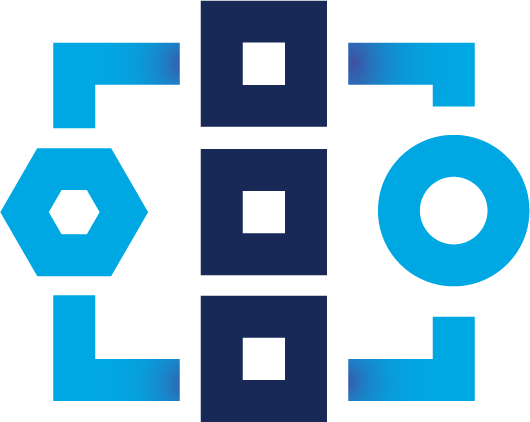Published: Jul 01, 2024
ConX: Helping construction contractors quote faster and win work with Google Cloud
Riley’s deep understanding of Google Cloud enabled ConX to deliver a Saas-based service for building and construction contractors that enables 2,500 users to improve the efficiency of estimation and tender management and is poised to expand internationally and apply machine learning to improve the quality of its products.
Google Cloud Results
- Reduces software development and release cycles
- Delivers 99.99%+ uptime
- Obtains deep insights into how customers use its products
- Reduces infrastructure costs by 70%
For small to medium contractors in building and construction, estimating jobs and managing the tendering process consumes time and resources better spent on profitable work. ConX provides software as a service tools that aim to help contractors manage the pre-construction, allowing them to quote on more jobs and ultimately win more work.
Founded in 2015 as a boot-strapped part-time venture running a jobs board, ConX now offers three products as the basis of a still-in-development integrated pre-construction solution. These products are ConX Measure, a cloud-based tool that enables contractors to complete fast, accurate material take-offs (material quantities and costs required to complete a project); ConX Quote, a product that enables contractors to create simple quotes, featuring take-off information and other required information, in minutes, and a platform that enables builders to post tenders, connect with preferred subcontractors to obtain quotes, or post jobs in marketplaces for subcontractor bidding.
“Our vision is to revolutionize the construction industry from the ground up with tools that are quick to adopt, easy to use, and cost-effective,” says Annie Slattery, Chief Executive Officer at ConX. “We pride ourselves on the simplicity of our products, because many tradespeople view technology almost as an afterthought when it is critical to their businesses.”
“The BigQuery data warehouse helps us understand how customers are using our products so we can identify trends and opportunities to improve the experience.”
Annie Slattery, Chief Executive Officer, ConX
A pivot to SaaS
ConX pivoted to a SaaS model in early 2019, and Annie describes the move as a “game changer” that enabled the business to target international markets and step up development of ConX Measure. ConX now does about 20% of its business in the United States and Europe with the remaining 80% in Australia and New Zealand. Government measures to control the coronavirus pandemic prompted a 500% year-on-year growth in revenue in 2020, that Annie puts down to the designation of construction as an essential service and the more time people had to review demonstration videos and experiment with technology products. The business now provides its tools to 2,500 users.
ConX trialled a few multinational cloud services before determining Google Cloud was the best fit for its business. “We based our decision on three metrics: uptime, user experience, and price points,” explains Annie. “We had uptime issues due to a number of outages on one of our previous cloud providers—in fact, 4 AM calls advising us our system was down were commonplace.”
“With Google Cloud, we also eliminated the outages that compromised customer service, giving us a sound platform from which to build a truly international business.”
Annie Slattery, Chief Executive Officer, ConX
NCS optimised cloud
Annie and her fellow co-founders then engaged cloud managed services provider Riley to complete the migration and optimize its Google Cloud architecture. “Riley had team members experienced in DevOps and cloud and applied a 30-60-90 day plan to position us for success,” she explains.
During the initial 30 day engagement, Riley reviewed the ConX business and provided advice about how to optimize cost and response speeds and track performance relative to metrics. Once Riley completed that program, its team worked with ConX to address larger issues, such as bot infiltration of the signup process for its software and reducing the impact of large files incorporating detailed architectural plans being uploaded to the service.
ConX and Riley completed the move to Google Cloud on September 1, 2020, with the business building, testing, and deploying with the Buildkite CI/CD platform to a containerized application environment orchestrated by the Kubernetes open source system. The business uses Cloud SQL to run its relational database and BigQuery to enable the analysis of data from multiple sources. “The BigQuery data warehouse helps us understand how customers are using our products so we can identify trends and opportunities to improve the experience,” says Annie.
“Google Cloud presents an opportunity to take ourselves to the next level and moving to the platform has been a really positive move for us.”
Jonathan Clarke, Chief Technology Officer, ConX
A 70% reduction in costs
Annie describes her four-person development team as “much happier” since the move to Google Cloud, with team members working to integrate its products into the Google ecosystem. The business has reduced its cloud costs by 70%, lowering its monthly spend without sacrificing customer experience. Furthermore, the ability to cost-effectively deploy multiple staging servers and undertake branching has reduced software development and release cycles by 50%–60%.
“With Google Cloud, we also eliminated the outages that compromised customer service, giving us a sound platform from which to build a truly international business,” says Annie.
Overall, Google Cloud positions ConX to realize its ambition of providing a consistent service to customers regardless of location. Furthermore, ConX can explore opportunities to build machine learning into its products to automate tasks such as the detection of scale and boundary surface areas for construction contractors and the recognition and counting of material items marked as an icon on the construction plan, improving the speed and accuracy of estimations. “Google Cloud presents an opportunity to take ourselves to the next level, and moving to the platform has been a really positive move for us,” concludes Annie.
This case study has been republished with permission.


